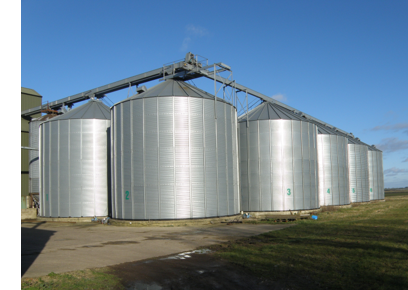Given that Lean is typically used to minimise non-value added waste in a business process, how often is a group structure reviewed to ensure that the group in performing a process operates in an efficient manner? All too often in modern office environments, group interactions, by design, are co-acting in nature, whereby the individual performs their job in relative independence from the group rather than coordinated to work closely together in the delivery of a common activity.
 The 'many hands, make light work' adage is perhaps best encapsulated in the Agile approach that an empowered, self-organising team can achieve more than a team that is directed using a traditional hierarchical, command and control management style. In this context, self-organising and empowered does not mean that an undisciplined and relaxed approach is adopted but rather accountability to succeed and fail remains with the team, especially one that is cross functional.
The 'many hands, make light work' adage is perhaps best encapsulated in the Agile approach that an empowered, self-organising team can achieve more than a team that is directed using a traditional hierarchical, command and control management style. In this context, self-organising and empowered does not mean that an undisciplined and relaxed approach is adopted but rather accountability to succeed and fail remains with the team, especially one that is cross functional.
A cross functional or cross skilled team rather is a group of interdependent individuals who work together in a specific manner to achieve a common objective. These high performance work teams are distinguished by their ability to function at a high level for extended periods of time, in the most efficient and effective manner possible. Efficiency is defined as achieving maximum productivity with minimum wasted effort or expense.
While team efficiency can be impacted by different personality types, an important element of team self-organisation are the commitments and social standards that individuals, working in teams, make to each other. For those familiar with Agile, these team derived commitments are typically formalised in a visible social contract and serves as a constant reminder for not only the team but also for any new team members to assimilate.
High performance team characteristics
While the structure of high performing teams are varied, there are a few fundamental characteristics listed below that are present in most teams and will often be evident when major changes occur or the composition of the team changes. Underpinning these traits is the regular activity of reflection to identify how to become more effective and to adjust behaviours accordingly.
-
Clear goals and expectations - Objectives must be clearly understood by all team members and each person must know exactly what their responsibilities are in relation to the achievement of team objectives. Clear goals and time frames drive highly efficient teams which are underpinned by agreed expectations and commitment.
-
Effective communication - Teams rely on effective verbal and written communication that is clear and concise to enable team collaboration and information sharing.
-
Ownership - High performance team members are empowered by a sense of ownership for what the team produces and for its success. Teams are quick to identify goals and take action. Focused on results, the team will exhibit resilience in the face of challenges and will resist settling for less than what they intended to achieve.
-
Trust - Members of high performance teams trust one another to take responsibility and to deliver to the best of their ability, within agreed time frames. Teams will ensure that there is collective engagement providing the right environment for success. Focused on consistency, the team will strive for harmony in pursuit of goals that are in accordance with team values and principles.
-
Diversity - Effective teams are composed of members with a wide range of skills and experiences from which to draw for support, guidance and motivation. Effective teams respect and embrace differences of opinion and will identify new opportunities and boldly envision successful outcomes. Focused on innovation, the team will seek out fresh ideas and revolutionary approaches.
-
Discipline – Teams that are characterised by discipline are systematic and rigorous in their activities. Focused on diligence and consistency of process, the team will relentlessly drive for accuracy and quality.
In summary, the challenge for any team is to build these capabilities and to use these core elements to identify possible actions that will improve the team's performance. For highly efficient teams to exist, all individuals working in a team must take responsibility for the overall group effectiveness.
The best teams invest tremendous amount of time and effort exploring, shaping and agreeing on a purpose that belongs to them both collectively and individually and then transforms this purpose into specific performance goals. In comparison with a co-acted group, a well-established cross functional group of self-organising individuals who work together are often better enabled to deliver a product or service that meets the customer's needs and provides value to the organisation.





